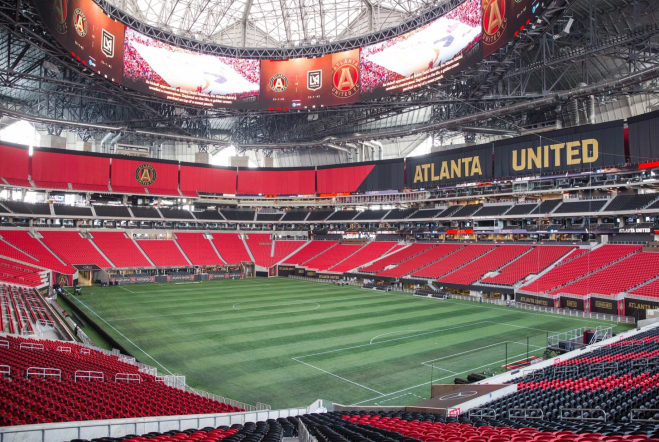The New York Times is starting to become a Green-Sports media All-Star! For the second time in two weeks, the “Gray Lady” ran a story about the intersection of Green & Sports. “Hockey In the Desert” by John Schwartz, appeared in The Times’ Climate: FWD online newsletter.
Two weeks ago, Ken Belson, The New York Times’ lead NFL reporter, jumped into the #CoverGreenSports waters with “Sports Stadiums Help Lead the Way Toward Greener Architecture.” His piece, which told the story of how and why Atlanta’s Mercedes-Benz Stadium, became the first pro sports stadium to earn LEED Platinum status, was terrific to my mind. But I thought this would be a typical mainstream media, Green-Sports one-off.
Happily, The Times proved me wrong, as, less than a week later, they ran “Hockey In the Desert,” by John Schwartz, as part of its Climate: FWD online newsletter.

John Schwartz, science writer at The New York Times (Photo credit: The Daily Texan)
Schwartz’ story actually centers on the non-green aspects of playing ice hockey at T-Mobile Arena in Las Vegas in June — the hometown Knights, in their inaugural season, somehow made it to The Stanley Cup Finals against the Washington Capitals so they are still hosting home games in desert as summer beckons. With that in mind, Schwartz asked the obvious question: “Doesn’t that mean that hockey is contributing to climate change — and maybe its own demise — by building ice palaces in the desert?”
After citing the obvious mega-challenge —”The outside temperature was in the 90s Fahrenheit (30s Celsius) before Game 1″ — Schwartz dove into the environmental issues surrounding the hosting of an NHL hockey game in a desert climate beyond simply the making of a quality ice sheet: “Cooling the vast volume of inside air and taking out the humidity so that players and spectators are comfortable requires an enormous amount of energy.”

T-Mobile Arena, home of the Las Vegas Knights (Photo credit: Trip Advisor)
Of course, the environmental challenges surrounding the playing of sports indoors in hot climes goes far beyond hockey. The writer quoted recent GreenSportsBlog interviewee Robert McLeman, an associate professor in the department of geography and environmental studies at Wilfrid Laurier University in Waterloo, Ontario, as saying that all arenas “come at a high environmental cost,” and that the discussion about hockey provides “an entry point into a conversation about what we want with these recreational facilities, and how to make cities more green.”
GSB’S TAKES
- The fact that the The New York Times is starting to find that Green-Sports is among the news that is “Fit to Print” (and/or post online, as the case may be) is more important than the actual content of Schwartz’ story.
- Let’s not rest on our laurels. Two stories on Green-Sports in The Times in two weeks is cause for celebration. But it’s not a trend, not even close. That means we need to keep pushing the #CoverGreenSports hashtag.
- Schwartz’ piece was strong. It illuminated several important issues surrounding the putting on indoor sports events in hot climates. I learned some things.
- He should’ve included a bit more about the steps the NHL and NHL Green are taking to lessen the environmental impact of their sport — one line and a link didn’t do justice to the NHL’s Green-Sports leadership.
- That the story appeared in Climate: FWD and not the sports section reinforces one of the impediments Belson says stands in the way of more frequent Green-Sports coverage: The topic doesn’t belong to any one section or editor; no one has ownership of it. Belson has a valid point — I, for one, think Green-Sports should reside in the sports section to provide oxygen to this subject to a wider audience than the already “converted,” In Science Times and Climate: FWD. Hopefully the editors at The Times will figure this out.
For now, I’m happy that two Green-Sports stories appeared under The New York Times masthead in two weeks.



